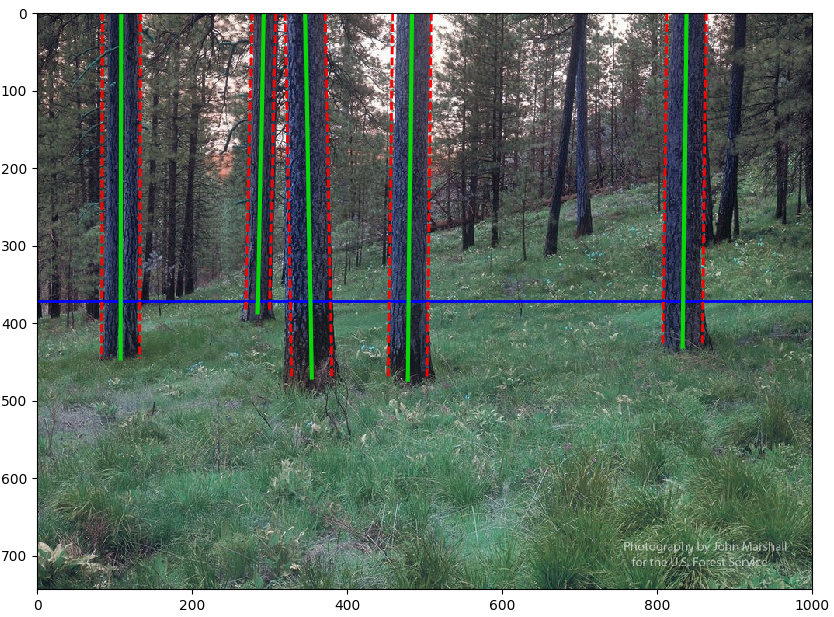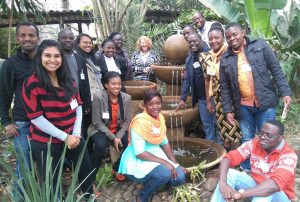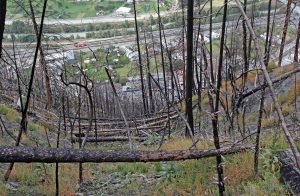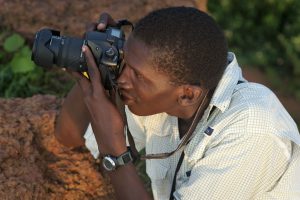IUFRO 125th Anniversary Congress Spotlight #52 – Building on tradition to plan for the future of forests

A 3D machine vision technology developed to detect and measure tree characteristics real-time during thinning operations. (Credit: Lucas Wells, Oregon State University)
“We’re trying to avoid throwing the baby out with the bathwater,” said Dr. Jens Peter Skovsgaard of the Swedish University of Agricultural Sciences in Alnarp, Sweden.
He was speaking about forestry operations and research and how change can be evolutionary rather than revolutionary. Dr. Skovsgaard is coordinator of a session entitled: Forestry “Classic” for the Future, at the IUFRO 125th Anniversary Congress in Freiburg, Germany in September. Read more…
IUFRO 125th Anniversary Congress Spotlight #51 – Pooling resources to meet sub-Saharan forest challenges

Training workshops for early and mid-career forest scientists across FORNESSA countries contribute to enhancing research competence and networking. (Photo by Michael Kleine, IUFRO)
Collaboration and cooperation are the keys to facilitating learning and making better use of research outcomes in sub-Saharan African countries facing severe forestry challenges.
That’s the philosophy behind Dr. Joseph Cobbinah’s upcoming session on the impact of forestry research on policy, livelihoods and economic development in sub-Saharan Africa. The session will take place at the IUFRO 125th Congress in Freiburg in September. Read more…
IUFRO 125th Anniversary Congress Spotlight #50 – Filling in knowledge gaps about natural disturbances and their interactions in mountain forests

Forest fire in protection forest (Photo U. Wasem/WSL)
In mountainous terrain they are called protection forests – forests that protect human settlements and infrastructure against natural disturbances such as rockfall, snow avalanche and shallow landslides.
Natural disturbances are becoming more and more important drivers in many mountain chains worldwide, mainly because of past land-use legacies. But also, under climate change, the incidence of some natural disturbances is increasing.
These disturbances and their interactions can threaten human life and property and can compromise the protection function of mountain forests. Read more…
IUFRO 125th Anniversary Congress Spotlight #49 – Citizen scientists around the world take to the woods in an effort to improve the health of forests

Involving the public in the scientific process is a primary objective. (Photo Pixabay)
The coordinator of a session on citizen science planned for the IUFRO 125th Anniversary Congress is aiming high.
He hopes the session will inspire discussion about the merit and potential of a global initiative on invasive forest pest monitoring, with special emphasis and resources for countries with developing economies.
The focus is on invasive species because people are major drivers of their spread. Consumer demand drives globalization and the international trade in ornamental plants, which is a major contributor to the invasive problem. Read more…
IUFRO 125th Anniversary Congress Spotlight #48 – Forest tourism can mean billions in economic benefits

Tourism and recreation should receive just as much thought, science, and funding as other forest uses. (Photo Pixabay)
Dr. Taylor Stein of the University of Florida in Gainesville believes “that any meeting that addresses the management of the world’s forests is incomplete without a focused discussion on tourism.”
While there is limited research on the impact of nature-based tourism, Dr. Stein pointed to a 2007 report from the Center for Responsible Travel that said nature-based tourism accounted for 7% of the international tourism market and had a $77 billion impact on the world’s economy.
And, he added, surveys of travelers around the world consistently show that natural attractions (e.g. wildlife) are important reasons for their visits and they value conservation and protection of environmental quality.
